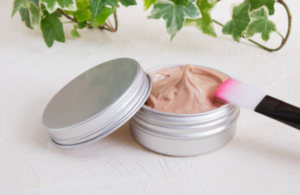Innovations Leading Towards a Cruelty-Free Industry

In the ever-evolving landscape of beauty, the pursuit of innovation isn’t just about staying ahead of trends; it’s also about ethical responsibility. The future of cosmetics is not only about creating products that enhance beauty but also ensuring they do so without harming animals. As the world becomes more conscious of the impact of its actions, the demand for cruelty-free cosmetics is on the rise. In this blog, we’ll explore the innovative strides being made in the beauty industry towards a cruelty-free future.
The Shift Towards Cruelty-Free
he movement towards cruelty-free cosmetics is not a recent phenomenon; it has been gaining momentum for decades. However, in recent years, several key factors have accelerated this shift, prompting both consumers and brands to reevaluate their approach to beauty products.
- Consumer Awareness and Activism: Perhaps the most significant driver of the shift towards cruelty-free cosmetics is the growing awareness among consumers about the ethical implications of animal testing. With the rise of social media and information-sharing platforms, consumers now have unprecedented access to information about animal testing practices in the beauty industry. This increased awareness has sparked a wave of consumer activism, with individuals advocating for cruelty-free products and boycotting brands that continue to test on animals.
- Legislation and Regulation: In response to growing public concern, governments around the world have introduced legislation aimed at reducing or eliminating animal testing in the cosmetics industry. For example, the European Union implemented a ban on animal testing for cosmetics in 2013, prohibiting the sale of products tested on animals within the EU. Similarly, countries like India, Israel, and Norway have also enacted laws banning or restricting animal testing for cosmetics. These legislative measures have put pressure on brands to find alternative testing methods that comply with regulatory requirements while still ensuring product safety.
- Advancements in Alternative Testing Methods: One of the most significant developments driving the shift towards cruelty-free cosmetics is the advancement of alternative testing methods. Scientists and researchers have made significant strides in developing non-animal models and testing techniques that can accurately assess the safety and efficacy of cosmetic products. These methods include in vitro assays using human cell cultures, computer-based modeling and simulation, and organ-on-a-chip technology, which replicates the structure and function of human organs. Not only are these alternative methods more ethical, but they also often provide more reliable results than traditional animal tests.
- Corporate Commitments and Consumer Demand: As consumer demand for cruelty-free products continues to grow, many brands have recognized the business imperative of going cruelty-free. Companies that prioritize ethics and sustainability are not only appealing to a broader consumer base but also safeguarding their reputation and brand image. Consequently, numerous beauty brands have made public commitments to phase out animal testing and transition to cruelty-free practices. Some have even obtained certifications from organizations like Leaping Bunny or PETA’s Beauty Without Bunnies program, providing consumers with assurance that their products are cruelty-free.
- Educational Initiatives and Awareness Campaigns: In addition to legislative measures and corporate commitments, educational initiatives and awareness campaigns have played a crucial role in driving the shift towards cruelty-free cosmetics. Non-profit organizations, animal welfare groups, and advocacy organizations have worked tirelessly to raise awareness about the ethical issues surrounding animal testing in the beauty industry. Through campaigns, documentaries, and grassroots activism, these organizations have empowered consumers to make informed choices and encouraged them to support brands that align with their values.

Innovations in Cruelty-Free Cosmetics
The future of cosmetics is bright, thanks to the innovative approaches being taken to create cruelty-free products. From cutting-edge technology to groundbreaking research, here are some of the most exciting developments in the world of cruelty-free beauty:
- Advanced Formulation Techniques: Traditional cosmetic formulations often relied on animal-derived ingredients for their texture, stability, and performance. However, innovative techniques are now allowing formulators to create products with similar or superior properties using plant-based or synthetic alternatives. For example, emulsifiers and stabilizers traditionally sourced from animal fats can now be replaced with plant-derived options such as emulsifying waxes derived from coconut or olive oil. Similarly, synthetic peptides and amino acids can mimic the effects of collagen and elastin, providing anti-aging benefits without the need for animal-derived ingredients.
- Lab-Grown Ingredients: Another exciting development in the world of cruelty-free cosmetics is the emergence of lab-grown ingredients. Scientists can now produce complex compounds such as hyaluronic acid, squalane, and keratin using biotechnology techniques that don’t involve animal testing or exploitation. These lab-grown ingredients offer a sustainable and ethical alternative to their animal-derived counterparts, without compromising on efficacy or performance. Furthermore, by eliminating the need for animal agriculture, lab-grown ingredients help reduce the environmental impact of cosmetic production, making them a win-win for consumers and the planet.
- Microbiome-Friendly Formulations: The human skin microbiome plays a crucial role in maintaining skin health and balance. However, many traditional skincare products disrupt the skin’s natural microbiome due to harsh ingredients or preservatives. In response, innovative brands are developing microbiome-friendly formulations that support the skin’s natural ecosystem without causing harm. These formulations use prebiotics, probiotics, and postbiotics to nourish beneficial bacteria and promote a healthy skin barrier. By respecting the skin’s microbiome, these products offer gentle yet effective solutions for various skin concerns, from acne to aging, without resorting to animal testing or harmful chemicals.
- Customizable Beauty Solutions: One-size-fits-all beauty products are becoming a thing of the past, thanks to advancements in customizable beauty solutions. Brands are now offering personalized skincare and makeup formulations tailored to individual needs and preferences. This not only reduces waste by minimizing the use of unnecessary ingredients but also ensures that products are optimized for each user’s unique skin type, concerns, and lifestyle. Customizable beauty solutions often involve online consultations or in-store diagnostics to determine the best formulations for each customer, making the shopping experience more engaging and empowering.
- Sustainable Packaging Innovations: While cruelty-free formulations are a crucial aspect of ethical beauty, sustainable packaging is also gaining momentum as a key focus area for innovation. Traditional beauty packaging often contributes to plastic pollution and environmental degradation, but innovative brands are now exploring eco-friendly alternatives. This includes biodegradable materials such as compostable paper, bamboo, sugarcane-based plastics, and mushroom-derived packaging. Additionally, brands are investing in refillable and reusable packaging solutions to minimize waste and encourage conscious consumption. By prioritizing sustainable packaging, cruelty-free brands are taking a holistic approach to environmental stewardship, reducing their carbon footprint and preserving natural resources for future generations.

The Impact of Cruelty-Free Cosmetics
The burgeoning demand for cruelty-free cosmetics isn’t merely reshaping the beauty industry; it’s catalyzing a broader socio-economic transformation with far-reaching implications. Here’s a closer look at the multifaceted impact of this ethical shift:
- Ethical Consumerism and Conscious Choices:The rise of cruelty-free cosmetics is emblematic of a larger trend towards ethical consumerism. Consumers today are more attuned to the ethical implications of their purchasing decisions, seeking out products that align with their values. By choosing cruelty-free cosmetics, consumers are making a conscious choice to support brands that prioritize animal welfare and ethical practices. This shift in consumer behavior not only drives demand for cruelty-free products but also sends a powerful message to the beauty industry about the importance of ethical sourcing and manufacturing.
- Corporate Responsibility and Accountability:The growing demand for cruelty-free cosmetics has compelled brands to reevaluate their testing methods and ingredient sourcing practices. Companies that continue to rely on animal testing risk alienating a significant segment of their customer base and facing backlash from advocacy groups and regulatory bodies. As a result, many brands are now investing in alternative testing methods and transparent supply chains to demonstrate their commitment to ethical practices. This heightened level of corporate responsibility and accountability is reshaping industry standards and fostering greater transparency and trust between brands and consumers.
- Innovation and Creativity in Product Development:The pursuit of cruelty-free cosmetics has spurred innovation and creativity in product development, leading to a wave of groundbreaking discoveries and technological advancements. Brands that prioritize cruelty-free practices are often more willing to experiment with new ingredients, formulations, and packaging materials. This culture of innovation not only drives product differentiation and consumer engagement but also fosters a spirit of collaboration and knowledge-sharing within the beauty industry. As a result, we’re witnessing an unprecedented wave of innovation in cruelty-free cosmetics, with brands pushing the boundaries of what’s possible and redefining the future of beauty.
- Environmental Sustainability and Eco-Friendly Practices:The shift towards cruelty-free cosmetics is closely intertwined with a broader commitment to environmental sustainability and eco-friendly practices. Many cruelty-free brands prioritize sustainable sourcing and production methods, using plant-based ingredients and biodegradable packaging materials to minimize their environmental footprint. By opting for cruelty-free cosmetics, consumers are not only supporting animal welfare but also contributing to efforts to combat climate change and reduce environmental pollution. This convergence of ethical and environmental concerns underscores the interconnectedness of social and environmental justice and highlights the role of the beauty industry in driving positive change.
- Global Advocacy and Policy Reform:The growing momentum behind cruelty-free cosmetics has catalyzed a global advocacy movement aimed at ending animal testing in the beauty industry. Advocacy groups, animal welfare organizations, and concerned citizens are mobilizing to raise awareness about the ethical and scientific shortcomings of animal testing and advocate for policy reforms to ban or restrict its use. In recent years, several countries and regions have implemented bans or restrictions on animal testing for cosmetics, signaling a significant shift towards more humane and ethical practices. These legislative victories are a testament to the power of collective action and the potential for positive change when individuals and communities come together to champion a shared cause.

The future of cosmetics is bright, thanks to the innovative strides being made towards a cruelty-free industry. From alternative testing methods to plant-based formulas, the beauty industry is undergoing a transformation that prioritizes ethics, sustainability, and innovation. By choosing cruelty-free products, consumers can support brands that are committed to creating a more humane and compassionate world. Together, we can pave the way for a future where beauty is not just skin-deep but also ethical and cruelty-free.




